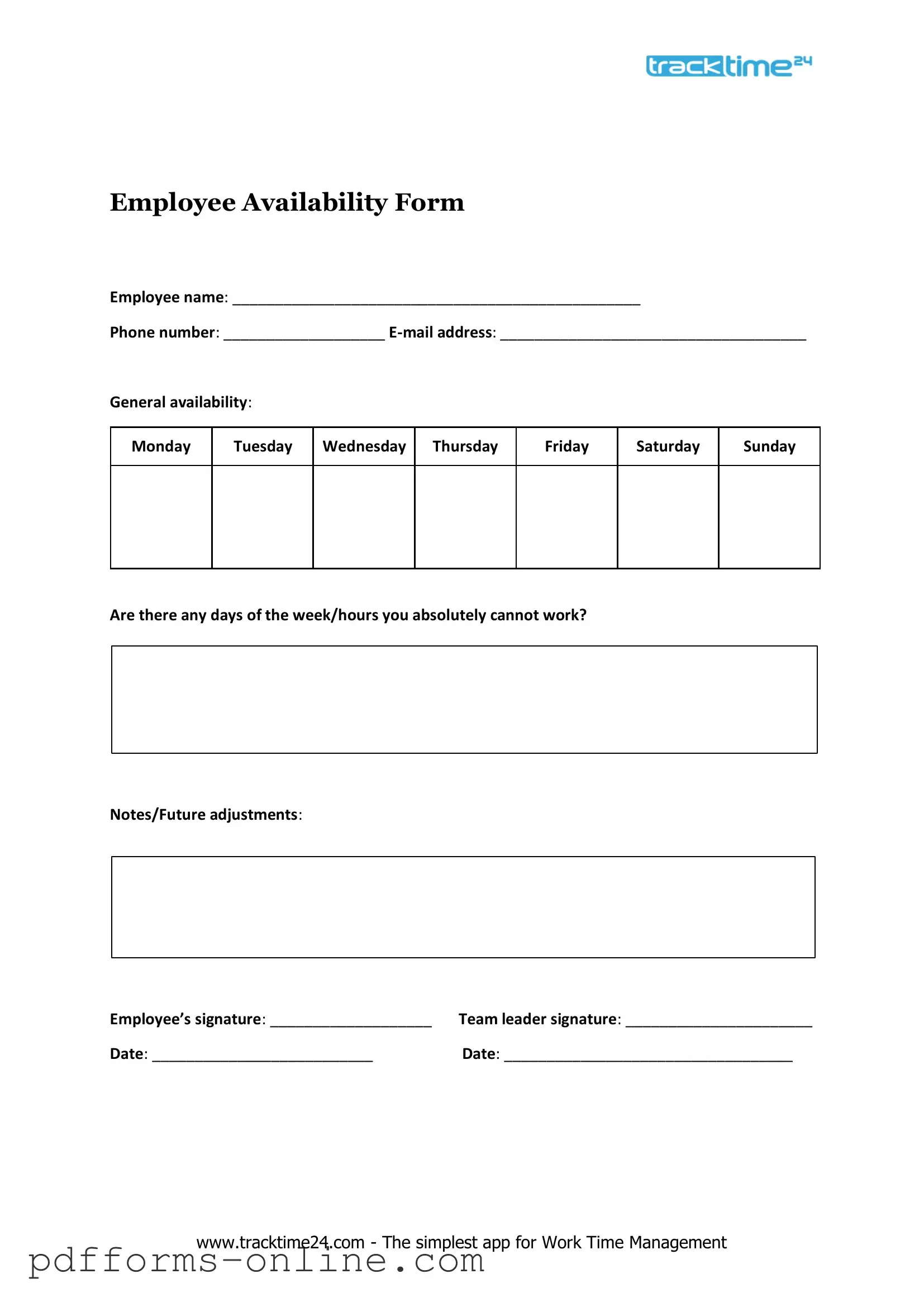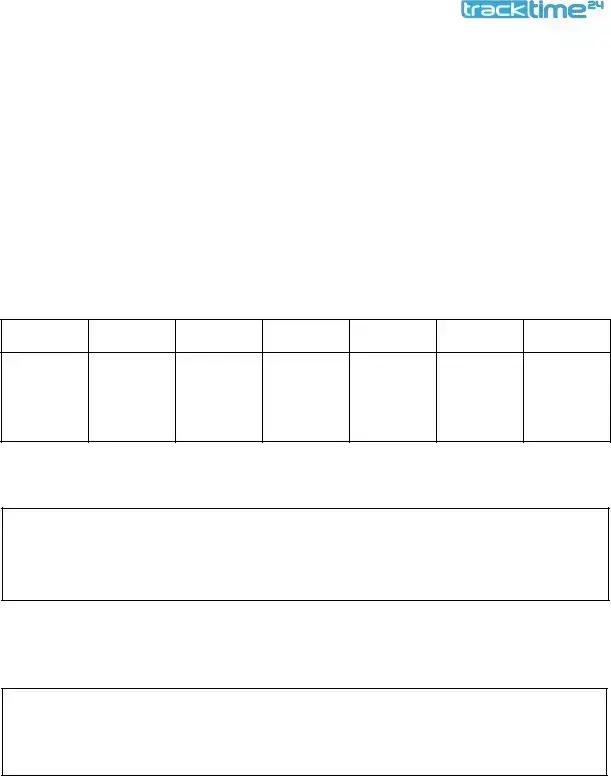The Employee Availability form shares similarities with the Work Schedule Request form. Both documents allow employees to communicate their preferred working hours and days. While the Employee Availability form focuses on when an employee is available to work, the Work Schedule Request form often includes specific requests for time off or adjustments to the standard schedule. This ensures that both employee needs and employer requirements are met efficiently.
Another related document is the Time Off Request form. This form is used by employees to formally request time away from work, whether for vacation, personal reasons, or illness. Like the Employee Availability form, it requires employees to specify dates and times. However, the Time Off Request form emphasizes absence rather than availability, making it crucial for managing staffing levels.
The Shift Preference form is also similar. Employees use this document to indicate their preferred shifts, whether morning, evening, or overnight. This form helps employers create schedules that align with employee preferences, which can lead to increased job satisfaction. The Employee Availability form complements this by providing a broader view of when employees can work.
The On-Call Availability form is another relevant document. It is used by employees who may not have a fixed schedule but are available to work on short notice. This form captures the times when an employee can be reached and is willing to fill in for absent colleagues. Both forms serve to optimize staffing by ensuring that employers know when employees are available.
The Leave of Absence form is similar in that it documents an employee's request for an extended period away from work. While the Employee Availability form focuses on regular work hours, the Leave of Absence form addresses longer-term absences for reasons such as medical issues or family emergencies. Each form plays a critical role in workforce management.
The Flexible Work Arrangement request is another comparable document. Employees use this form to propose changes to their work schedule or location, such as remote work or adjusted hours. While the Employee Availability form outlines when an employee can work, the Flexible Work Arrangement request focuses on how and where they would like to work, allowing for a tailored approach to employee needs.
The Employee Scheduling form is also relevant. This document is used by employers to create and communicate work schedules to employees. It often incorporates information from the Employee Availability form, ensuring that the schedules align with employee availability. This collaboration is vital for maintaining operational efficiency.
The Shift Swap Request form is similar in that it allows employees to request changes to their assigned shifts. Employees can propose swapping shifts with a coworker, which requires approval from management. This form often works in conjunction with the Employee Availability form to ensure that all parties are aware of each other's schedules and availability.
The Mobile Home Bill of Sale form is essential for anyone looking to buy or sell a mobile home in Arizona, as it provides a clear record of the transaction. By accurately filling out this form, individuals can avoid potential disputes and ensure that the sale is properly documented. For further details on necessary documentation, you can refer to All Arizona Forms.
Lastly, the Attendance Record form is related as it tracks employee attendance, including days worked and absences. While it does not directly address availability, it provides context for understanding patterns in employee attendance. The information from the Employee Availability form can help employers anticipate and manage attendance issues more effectively.

